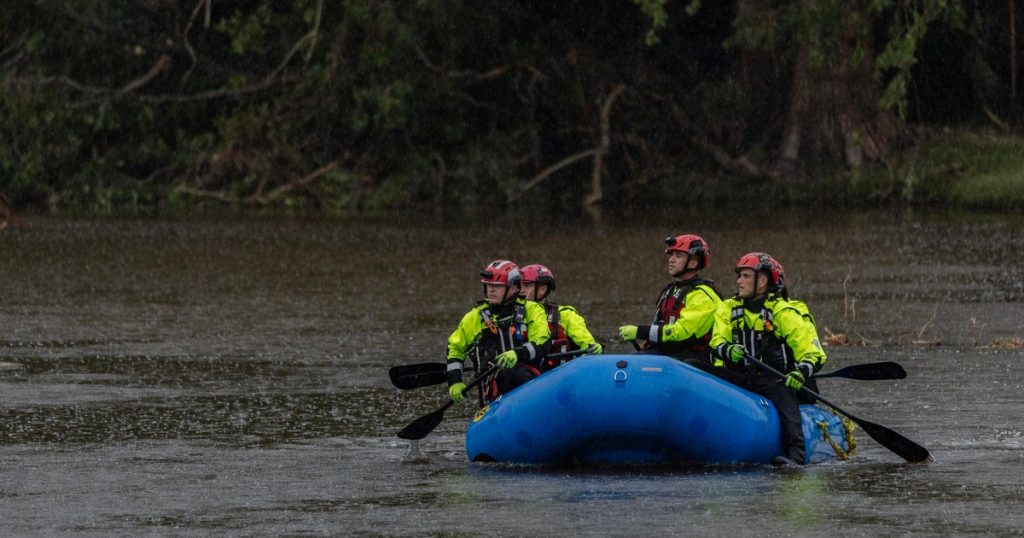The Texas Hill Country recently faced a catastrophic event when flash floods struck on July 4, resulting in over 120 fatalities and many missing persons. The sudden deluge, which saw more than a foot of rain fall within a mere 12 hours, wreaked havoc particularly along the Guadalupe River, affecting towns like Kerrville and Hunt. Rescue efforts are ongoing as the community comes together to support those affected by this natural disaster.
| Article Subheadings |
|---|
| 1) Overview of the Flood Incident |
| 2) Human and Material Impact |
| 3) Ongoing Rescue Efforts |
| 4) Community and Organizational Response |
| 5) Ways to Help and Donate |
Overview of the Flood Incident
On July 4, 2023, the Texas Hill Country experienced unprecedented flash floods that devastated numerous communities. The NWS reported that more than 12 inches of rain poured into the Guadalupe River basin in less than half a day. The intensity of the rainfall caused water levels to rise dramatically, with the Guadalupe River surging up to 26 feet in just 45 minutes. The towns most impacted included Kerrville and Hunt, where residents were caught off guard by the sudden onset of the disaster.
The phenomenon of flash floods is not unusual for the region, particularly during the summer months; however, the scale and speed of this event were exceptional. As storms collected moisture from the atmosphere, they dumped it rapidly over already saturated ground, leading to run-off that quickly overwhelmed the riverbanks.
Human and Material Impact
The toll of the floods has been catastrophic, with over 120 confirmed dead and dozens more reported missing. Families have been torn apart, and communities are grappling with the emotional fallout of this disaster. Among the most affected was the Camp Mystic girls’ summer camp, where more than two dozen children and staff members were reported missing, highlighting the profound human tragedy at the heart of this event.
The rapid rise of floodwaters swept away vehicles, homes, and essential infrastructure, crippling the communities that rely on these facilities for daily life. Areas like Kerrville, Ingram, Center Point, and Comfort have experienced widespread destruction, with thousands displaced and in dire need of urgent assistance. The economic implications of the flooding also pose significant challenges for recovery.
Ongoing Rescue Efforts
In the wake of the disaster, search and rescue operations have been ramped up. Local authorities, along with nonprofit organizations such as TEXSAR, have deployed specialized teams trained in swiftwater rescue to aid in locating the missing. Volunteers, along with law enforcement agencies, are scouring neighborhoods affected by the floods, often using boats, drones, and search dogs to navigate the treacherous conditions.
The search has also been made challenging due to hazardous debris scattered across the flooded zones. Rescue teams are working against the clock to reach as many individuals as possible, prioritizing areas where survivors may be trapped. The community has united in its efforts, with residents offering their time and resources to assist in recovery.
Community and Organizational Response
In response to the unfolding crisis, various organizations and community groups have mobilized to provide immediate help. Local churches, like the Southern Oaks Church in Kerrville, have begun accepting donations, showing how grassroots initiatives can galvanize support during an emergency. Additionally, the Austin-based nonprofit TEXSAR aims to raise $100,000 to sustain its efforts in searching for the missing and providing flood relief.
Numerous other organizations have stepped up, including the American Red Cross and various local churches and schools, offering meal services, shelter, and critical supplies—an embodiment of the Texan spirit in times of adversity.
Ways to Help and Donate
As the situation evolves, many individuals and groups are eager to contribute to the recovery efforts. The Kerr County Flood Relief Fund is directing donations toward vetted organizations committed to effective relief and recovery. This includes assistance to local communities like Hunt, Kerrville, and Ingram.
Several nonprofits are actively seeking donations, including the Salvation Army, Mercy Chefs, and the International Medical Corps. Offering various forms of aid and services, they are mobilizing to ensure that those affected receive essential support in the coming days and weeks. From in-store donation drives at local supermarkets to online fundraising campaigns, there are numerous ways for the public to contribute.
| No. | Key Points |
|---|---|
| 1 | Over 120 people confirmed dead, with many still missing as search efforts continue. |
| 2 | Flash floods caused by extreme rainfall of more than a foot within 12 hours. |
| 3 | Immediate rescue operations being conducted by local authorities and nonprofits. |
| 4 | Communities pulling together to provide relief and support for those affected. |
| 5 | Numerous organizations accepting donations and supplies to aid recovery efforts. |
Summary
The flash floods that struck the Texas Hill Country have left an enduring impact, taking lives and displacing numerous residents. As search efforts continue, the community has shown resilience and solidarity in the wake of this disaster. A united effort from local and national organizations is underway to provide the necessary support, proving that in times of crisis, the strength of community often shines the brightest.
Frequently Asked Questions
Question: What caused the flash floods in Texas Hill Country?
The flash floods were triggered by an extreme rainfall event, with over a foot of rain falling in a short period of time, overwhelming river systems and leading to rapid water level rises.
Question: What kind of assistance is being provided to those affected?
Various organizations are offering a range of services including meal distribution, shelter provision, and medical support to those impacted by the floods.
Question: How can individuals contribute to the relief efforts?
Individuals can contribute by donating to established relief funds, participating in in-kind donation drives, or volunteering their time with local nonprofits engaged in the recovery efforts.


